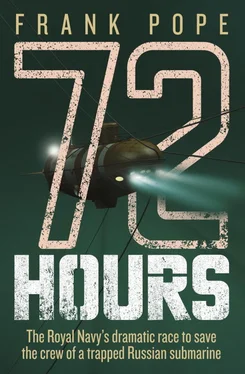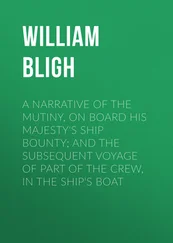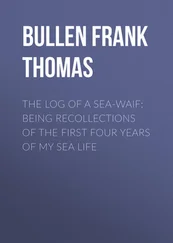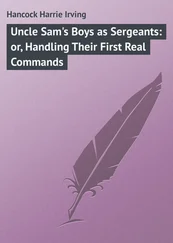In 1971, HMS Artemis was moored up in the safety of Haslar creek opposite Portsmouth on the south coast of England, preparing for a mission. She’d just been in for repairs on the other side of the dockyard, and although she was trimmed with her buoyancy tanks to be low and stable in the water, her fuel tanks had been emptied. Some small jobs were still being done on board, and an electrical shore supply cable ran from the jetty and snaked through the submarine, preventing any of the hatches between watertight compartments from being shut.
The water of the estuary lay only inches beneath one of the open deck hatches. Fuel tanks on submarines have any empty space filled not with air – which would compress with depth – but with seawater. A-boats like Artemis also used one of their ballast tanks to carry more fuel, the usual hole in the bottom having been plugged with a special ‘Kingston’ valve.
Before refuelling the tanks, it was necessary to ‘first fill’ them with seawater. One of the crew was ordered to do so, and took a water hose from shore. The submarine settled lower and lower in the water as he filled the fuel tanks. Very soon seawater began to flood into the open deck hatch. The duty Senior Rate managed to evacuate a party of Sea Cadets who were visiting the submarine, but within 60 seconds the water had filled the submarine enough to sink her stern into the bottom of the creek nine metres below. Three men, including the duty Senior Rate, were trapped in an airpocket inside.
The Navy scrambled to assemble a rescue team, but by dawn the next morning they still hadn’t reached the men. Eventually the submariners took matters into their own hands, donned their escape suits and launched themselves out of the forward torpedo hatch and to freedom.
Although the men had saved themselves, just as the Navy procedures expected they should, the incident shook the submarine establishment. The first nuclear submarines had been commissioned just nine years before, and a foolish series of errors had allowed one of Her Majesty’s Ships to sink while still at her moorings. What’s more, despite now having hundreds of sailors fighting beneath the waves, there was no provision to rescue them when things went wrong. As a result, the Submarine Rescue Service was born.
This might just be the Service’s first live deployment. Riches was excited, but also felt a nagging doubt. The reputation of the Royal Navy felt like it was in his hands. As commander, any mistake would be on his head. With the front door open, he unzipped his bag and checked he had a couple of clean white uniform shirts. Some things about the Navy were burned deep in the brain; a crisp uniform was one of them. If he was going to screw up, at least he’d do it without a dirty shirt.
Ten minutes after slamming the door he was handing his bag up to an RAF crewman and being showed up the ladder into the waiting Nimrod by the Captain. All of them were very sombre and polite. The Captain showed Riches to the cockpit and sat him down in one of the seats next to their antisubmarine warfare equipment, turning it so that he was facing forward and could peer out of a porthole.
As the aircraft began to roll out towards the holding point, Riches pulled on the headset they’d handed him.
‘Don’t worry, sir, we’ll have you in Kinloss in an hour and a half,’ said the Captain.
‘Kinloss?’ Riches replied. ‘I don’t want to go to Kinloss… I need to get to Prestwick.’ Sitting at the holding point at the end of the runway, engines running, the pilot and co-pilot looked at one another. Speaking as clearly as he could despite the hurry, he told them what was going on. The co-pilot pulled out a mobile phone and filed a new flight plan.
The sombre atmosphere evaporated. It turned out that the RAF crew had not been told anything other than that they were to take a Navy commander ‘up north’. Although such scant information could sometimes signify a top-secret mission, more often it meant a compassionate case. And if someone had just lost a loved one, they didn’t want to be coming out with the usual banter.
While the new plans were being calculated by the Navigator someone came up from the back with some rudimentary in-flight catering. Riches hadn’t eaten all day, and wolfed down a cold chicken fajita and Coke. Before he’d even finished eating, the Nimrod’s engines started to roar again. The tension in his veins ebbed; at last he was moving.
The noise didn’t please everyone, however. One of the local residents, apparently upset about the noise of the Nimrod taking off, called the airport and reported that they’d seen something falling off the aircraft as it passed overhead. Twenty minutes later, the news came through on the VHF. The pilots did a full check of the instruments while other members of the crew looked out through the bubble windows to see if they could see anything hanging off the aircraft, or missing. No one could spot anything wrong.
The Nimrod crew told Riches it was not an unusual tactic by those living near airfields, in retribution for flights that disturbed them. It was an effective, if unfair, punishment. The crew would now be forced to do a full shut-down and system check at Prestwick rather than simply dropping their passenger and continuing on, adding at least another hour and a half to their already delayed Friday-night plans.
Friday, 5 August/Saturday, 6 August
SS + 35 h 45 mins
16.15 UK – 19.15 Moscow – 04.15 Kamchatka
Prestwick International Airport, Glasgow
Four minutes after the Nimrod took off from Filton, Squadron Leader Keith Hewitt touched down at Prestwick in the scrambled C17. Other members of the team were being assembled further south. An RAF tactical team and a Russian interpreter had been picked up from Henlow airbase in Bedfordshire and taken in a Merlin helicopter to RAF Lynham near Swindon, where they would be joined by the backup C17 aircrew. A Hercules was coming to pick them up and deliver them to join the gathering rescue forces at Prestwick.
The logistical jigsaw that Hewitt had avoided in his rapid departure from Brize Norton caught up with him on the tarmac apron of Prestwick. As aircraft commander of the C17, Hewitt was responsible for all aspects of delivering the Navy crew to their destination. As soon as the engines were shut down he despatched his crew like a tactical bomb, the multiple warheads homing in on different targets: route details, weather predictions, destination data and flight clearances.
The loadmaster concentrated on the containers on the back of Rumic’s lorries that would be making up their payload, the co-pilot took charge of programming the flight computer with the course and working out the fuel equations, and the second flight crew began to hunt for up-to-date meteorological reports for the 11-hour flight, aviation charts and any information at all on Petropavlosk’s landing strips.
Stuart Gold had arrived at Prestwick half an hour before the enormous Boeing C17. He’d never seen one before, and was awestruck by its size as it dropped out of the sky. He watched, fascinated, as it taxied over to his containers and slowly opened its back gate to reveal its cavernous interior. For the first time he realised that this might actually happen. They might actually be going to Russia.
Flight Sergeant Andy Macintyre, one of the two loadmasters, strode up and introduced himself and nodded at the assembled shipping containers containing the Scorpio rescue equipment.
‘We need to get the weights of your kit,’ the RAF man said.
‘Sure thing,’ replied Gold. He looked over at the three containers and took a breath. ‘Well, that’s six tons right there,’ he said, drawing a finger at the furthest to the left. ‘That one there is also six. This one is about five. And the umbilical cable there, that’s about two tons.’
Читать дальше












